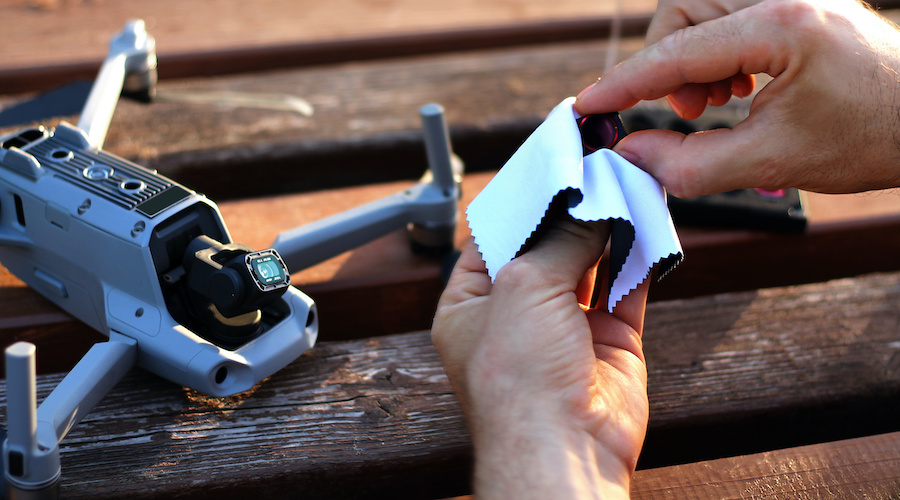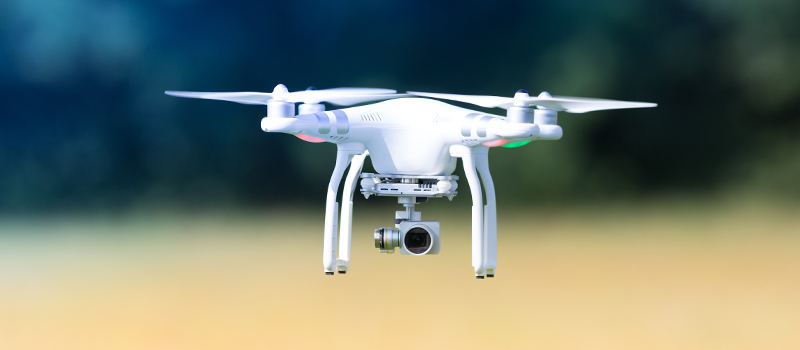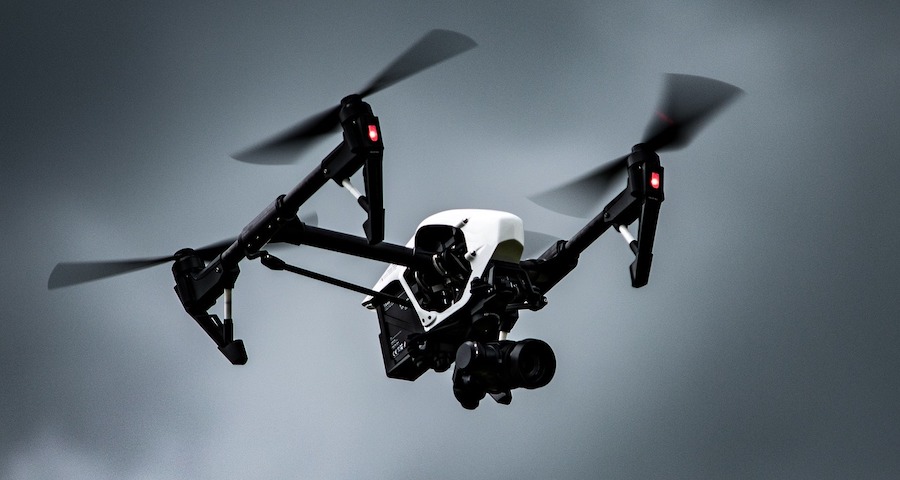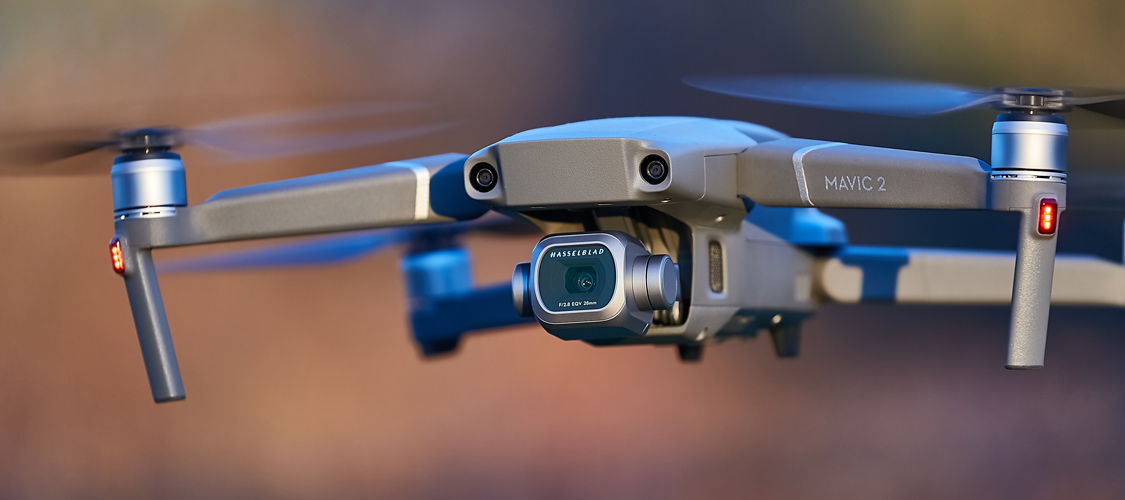-
What are ND filters?
-
When should you use ND filters?
- Long exposure shots
- Exposure balance
- Motion blur
-
How to check for high-quality ND filters
- Vignette effect
- Color shift
-
How to choose which ND filters to use
-
Recommended ND filter brands for camera drones
- 1. PolarPro
- 2. Fstop Labs
- 3. Neewer
-
Final thoughts
Professional photographers are no strangers to bringing a bunch of accessories whenever they have to do a shoot. Between the tripods, reflectors, wireless controllers, and different lenses, photographers know that camera setups need to be able to adapt to different subjects and lighting conditions. This same principle can be extended to drone photography.
The customization options for drone cameras aren’t as extensive as those for DSLR cameras given how small they are. However, there is one accessory that can help drone cameras adapt to challenging lighting conditions – ND filters. What are ND filters, how do they work, and how do you know which ones to use?
What are ND filters?
The primary function of Neutral-Density (ND) filters is to limit the amount of light that enters the lenses of a camera. They are useful for avoiding over-exposed shots in either still photography or filmmaking. The appearance of ND filters can range from clear to an almost opaque grey. Aside from controlling the light, an ND filter also does not affect the color reproduction in the shots, thus the ‘neutral’ qualifier.
A standard ND filter is simply a piece of dark glass that reduces the amount of light that can go through it and is received by the camera lenses. ND lenses are distinguished by the number of ‘stops’ they provide. Different models of ND lenses have corresponding ‘f-stops,’ which is defined as the ratio of the focal length of the lens to the diameter of its entrance pupil. The higher the number of f-stops for the filter, the less light it allows to pass through.
A key characteristic of a good ND filter is that it must uniformly filter the light so that there are no alterations to the image’s sharpness and contrast. Its filtering ability must also be constant across the visible spectrum to avoid any color alterations. However, such a phenomenon may be observed in poor-quality ND filters.
There are also ND filters that have a polarizing function. By filtering out light that had been polarized as an effect of reflections, a polarizing filter can eliminate glare. This can be useful when shooting near large reflective surfaces, such as bodies of water, the glass on windows, or the leaves on trees. A polarizing filter can also help darken blue skies or increase the saturation of certain colors.
Polarizing filters can be combined with ND filters at various f-stops. Polarizing ND filters are recommended when shooting outdoors at excessively bright or sunny conditions and near reflective surfaces. However, take note that the polarizing effect of the filter increases the loss of light. Thus, a photo shot with a polarizing ND32 filter will appear darker than one shot with a plain ND32 filter.
When should you use ND filters?
Although adjustable ISO settings are par for the course for drone cameras (as with just about any digital camera), not all of them come with adjustable apertures. Even for those that do, there is still a chance of taking overexposed shots at the lowest ISO and aperture settings. This can be particularly problematic for drone cameras that are typically used in outdoor settings. An ND filter gives you an allowance to play around with your camera settings the exact shot that you need, even when there’s harsh lighting. Here are some common photography techniques made possible by the use of ND filters:
Long exposure shots
Reducing the shutter speed to capture long exposure shots is a long-established technique in photography. When used in oceans, rivers, and waterfalls, long exposure shots give the appearance of smoothness, making these bodies of water appear more dynamic yet tranquil.
The problem with slowing down the shutter speed is that it also allows more light to enter the camera’s sensor. Under harsh lighting, this technique will almost certainly result in overexposed shots.
Exposure balance
Capturing any scenery where there is an extreme contrast in exposure is always problematic. For instance, you may have a very bright background and a subject in the foreground that in under a dark shadow. Taking the picture as it is may result in either an overexposed background or an under-exposed subject. Using an ND filter can help soften this contrast, allowing you to take a more balanced shot. Conversely, you can also use an auto-bracketing feature (if your camera has it) and balance the exposure in post-processing.
Motion blur
Another common effect achieved by long exposure is motion blur. Motion blur creates the illusion of movement in a still photo, thus making photos a lot more interesting and dynamic. In videos, motion blur creates a sense of speed for moving objects and make them look a little more realistic to the viewers’ eyes. Clouds drifting across the sky, cars moving across the freeway at night, or a crowd of people crossing the street all make interesting subjects for motion blur.
The problems of composing a shot with motion blur are the same ones that occur in long exposure shots – an excess of light entering the camera’s sensor. By shooting with an ND filter, you can try to get a motion blur effect without having to worry too much about overexposure.
How to check for high-quality ND filters
Not all ND filters are made equal. Just as with any accessory that goes into a professional-grade camera, ND filters have details that are far smaller than what can be seen with the visible eye. This means that ND filters have to be made with very high standards in terms of quality and precision. If you’re still at the phase where you’re trying out ND filters, here are some issues you should watch out for:
Vignette effect
The vignette effect can be observed if there is significant darkening around the edges of your shot. While this effect can be desirable in some cases, you will not want to inadvertently end up with a dark border in all of your shots. In any case, the effect can be easily recreated in post-processing.
Vignette effects can happen when there is uneven filtering of light through the ND filter resulting in light drop-off near the filter’s edges. This is a sign of poor design of the optics of the ND filter and cannot be remedied.
Color shift
Color shift is a far more common sign of a poorly designed ND filter. This can manifest in several ways, usually as a green or magenta color cast over all your images and videos. A color shift is typically attributed to the use of low—quality materials in an ND filter and is an effect that can be very difficult to eliminate.
How to choose which ND filters to use
The good thing about ND filters available for drone cameras is the available selection is nowhere near as extensive as those for DSLR cameras. This is probably due to the additional weight of ND filters at higher f-stops going beyond what drone camera gimbals can handle. A usual set of ND filters for a drone includes the following pieces: ND2, ND4, ND8, ND16, ND32, and ND64. A set does not need to have all these components and can have just three, which should be versatile enough to cover most circumstances.
The number of an ND filter corresponds to the number of “stops” it provides. In simple terms, an ND2 filter reduces light by 1/2 and corresponds to an f-stop value of 1. An ND4 filter reduces light by 1/4, corresponding to an f-stop value of 2. At the extreme end, an ND64 filter corresponds to an f-stop value of 64 and reduces light to only 1/64 of its original intensity.
As we’ve mentioned, a set can also offer polarizing versions of any ND filter. Thus, an ND8 filter can be offered separately from an ND8/PL filter. A set can also come with a standalone polarizing (PL) filter with a very low f-stop value of 1.6. With such a huge variety of potential interchangeable accessories, choosing which ND filter to use can be a frustrating exercise in trial and error.
The table below summarizes the conditions that are appropriate for each type of ND filter. Moreover, we have also included how the use of an ND filter can allow you to extend the exposure time settings so you can capture those long exposure or motion blur shots.
| ND Filter | Conditions | Old Exposure Time | New Exposure Time | Shutter speed |
| ND2 | At dawn or dusk | 1 sec | 2 sec | 1/ |
| ND4 | During overcast or cloudy days | 1 sec | 4 sec | 1/250 |
| ND8 | Partly cloudy conditions | 1 sec | 8 sec | 1/500 |
| ND16 | Partly cloudy but mostly sunny conditions | 1 sec | 16 sec | 1/1000 |
| ND32 | Sunny and clear conditions | 1 sec | 32 sec | 1/1250 |
| ND64 | Extremely bright conditions with reflective surfaces | 1 sec | 1 minute | 1/2000 |
When using this table, it is best to look at the conditions and shutter speed settings in isolation. For instance, setting a shutter speed of 1/1250 on a sunny day might be problematic, even with an ND32 filter. Instead, look for the ND filter that can capture well-balanced shots given the current lighting conditions and calculate for the number of f-stops you will need to shoot at your desired shutter speed.
Take note that these guidelines are merely recommendations for when and how to use different ND filter models. As ND filter quality varies per manufacturer, the results you will get when shooting at certain conditions can also vary from one brand of ND filters to another.
Recommended ND filter brands for camera drones
Shopping for ND filters can be a very selective experience because ND filters need to be tailor-made according to the shape of a camera. This means that you’ll need to look for a set of ND filters that was specifically designed for your drone model. To help you narrow down your options further, here are some of the best brands of ND filters that the drone community recognizes.
1. PolarPro
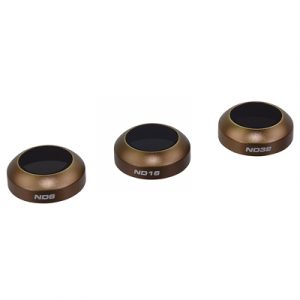 PolarPro is a brand that specializes in professional-grade accessories meant for outdoor and rugged use. You may have also heard of this California-based company from their successful bid in Shark Tank.
PolarPro is a brand that specializes in professional-grade accessories meant for outdoor and rugged use. You may have also heard of this California-based company from their successful bid in Shark Tank.
Among their products are mounts, straps, tripods, and filters for a wide range of drones, gimbal cameras, and drone cameras. When it comes to both photography and adventure, PolarPro is a brand that certainly knows their stuff.
Right now, PolarPro’s selection of ND filters is limited only to DI models – the Mavic Pro, Mavic 2, Mavic Air, Mavic Air 2, Phantom 4 Pro, and Inspire 2. The drone camera ND filters of PolarPro come in both Standard and Cinematic versions, with the latter boasting of multi-coated construction for superior light transmission, feather-light construction, and professional-grade production.
2. Fstop Labs
 Fstop Labs, despite the name, offers more than just optical accessories for DJI products. If you own a DJI drone, you can pretty much go on a shopping spree on the online store of Fstop Labs. On top of a selection of ND filters for the Mavic 2, Mavic Mini, and Mavic Air, there are also similar accessories for Osmo handheld gimbals and GoPro action cameras.
Fstop Labs, despite the name, offers more than just optical accessories for DJI products. If you own a DJI drone, you can pretty much go on a shopping spree on the online store of Fstop Labs. On top of a selection of ND filters for the Mavic 2, Mavic Mini, and Mavic Air, there are also similar accessories for Osmo handheld gimbals and GoPro action cameras.
On top of their excellent optical properties, the ND filters of Fstop Labs are known for having a hydrophobic coating that helps repel oils, dust, dirt, and water. If you’re looking for ND filters that can also double as mechanical protection for your camera lenses, then the products by Fstop Labs should be worth consideration.
3. Neewer
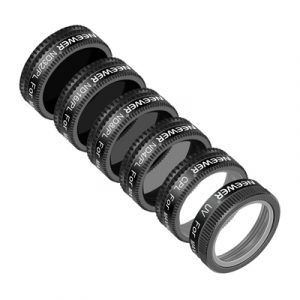 Another big brand in the market for photography equipment, Neewer stands out easily with a range of ND filters that are compatible with more than just the usual DJI drones. With options for the Yuneec Typhoon H, Typhoon 4K, and Zenmuse cameras, Neewer better embraces versatility in their products.
Another big brand in the market for photography equipment, Neewer stands out easily with a range of ND filters that are compatible with more than just the usual DJI drones. With options for the Yuneec Typhoon H, Typhoon 4K, and Zenmuse cameras, Neewer better embraces versatility in their products.
They have also positioned themselves as a brand that offers professional-grade accessories at prices that amateurs can afford. This is quite apparent in their ND filters, which can cost less than half of what other brands offer for similar products. Neewer is a great option for those who are looking for ND filters on a budget.
Final thoughts
If you’re a drone photographer who frequently ends up with shots that you’re not quite satisfied with, then a set of ND filters may be exactly what you need to bring those shots to another level. More than any other benefit, ND filters give you the versatility to take photos and videos in conditions that would otherwise have been less than ideal.
Before you go on that trip to the beach or snow with your drone, then you might want to buy a set of ND filters. They are great fun to play with and very easy to use. Based on the experience of a lot of drone pilots, you might just end up affixing an ND filter to your drone camera permanently.
Note: Pilot Institute is part of the Amazon Associates program. We may earn a commission on sales, although this does not increase the cost for you.
